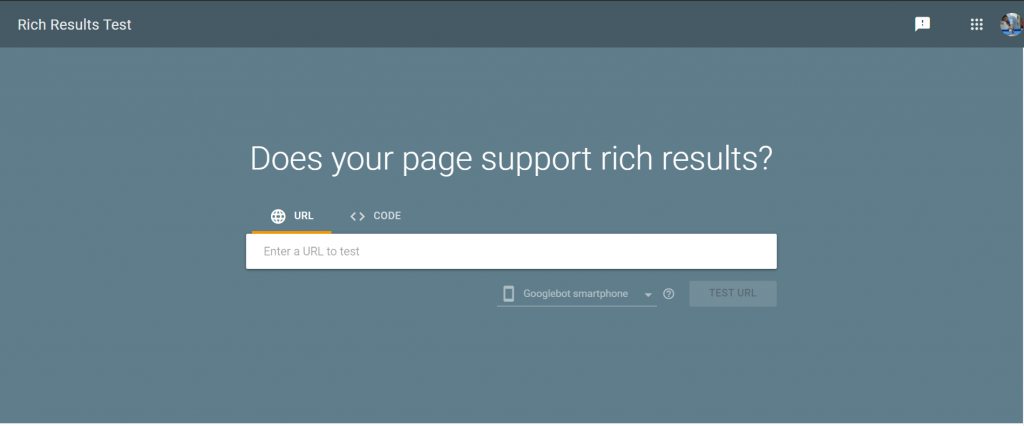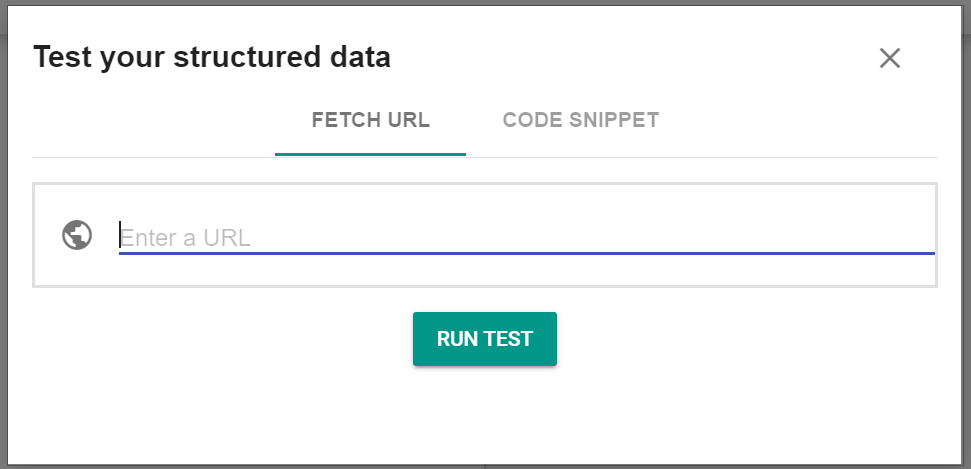When it comes to Schema Markup, and Digital Marketing, Everyone likes quick and easy wins. To get your website ranked on the internet, you need to take advantage of as many SEO tricks. Creating a Schema Markup is one technique that will definitely help improve your SEO strategy.
What is Schema Markup?
Schema markup is a structured data vocabulary that helps search engines better understand your website’s info to serve rich results. These markups allow search engines to see the meaning and relationships behind entities mentioned on your site.
According to the official site
What is a Structured data?
Structured data is a way of organizing information for better accessibility. It might be hard to understand for some because of its relation to coding. However, in simple terms, it’s also called metadata or information behind the information.
According to the official site
What is the Main Purpose of Schema Markup?
When it comes to SEO, structured data represents some markup that is implemented on a website that search engines like Google can use in order to display information better. SEOs very often refer to structured data as Schema Markup because it’s one of the most popular markups used to structure data.
Using that markup, Search Engines can display what is known as “rich search results” or “rich snippets”. They are called “rich results” because they contain more elements than regular results, making them stand out.

The difference between Schema, Microdata, and Structured Data?
To make things easier, let’s shortly recap what these terms mean and what differences between them are:
- Structured Data is a general term that represents binding items to values to better structure information. It can be related to SEO as much as to anything else which contains information.
- Microdata is a format and it represents the way the data is structured… in a ‘visual manner’, let’s say. In simple terms, think of it as text vs audio or video. You can say the same thing in both, but it will appeal to different people. You can have the same data structure in Microdata format or in JSON-LD format, for example.
- Schema is a vocabulary that defines the terms and values. There are other vocabularies such as Dublin Core. In simple terms, think of them as languages. The good thing with Schema.org is that it has been accepted by very many platforms, making it the best option for multiple scenarios. That’s why many people use Schema Markup as a synonym for implementing Structured Data.
Here are some takeaways:
- You can have data structured in multiple formats, such as microdata of JSON-LD.
- You can define terms using multiple vocabularies such as Schema.org or Dublin Core.
- You can use either vocabulary with either of the formats, resulting in your markup.
- When people refer to Schema Markup, they generally refer to everything related to structured data but using the Schema.org vocabulary.
How Does Schema Markup Affect SEO & Search Engines?
To put it simply, structured data is not a ranking factor/signal. But if you’ve been doing SEO for a while, you know I’m lying and it’s not actually that simple.
One thing we know for sure is that we cannot 100% trust what Google says. It’s not that they’re not transparent, but they have to keep the algorithm secret.
Schema Markup Types Supported by Google:
You might be wondering what important types of schema markup are there? Well, there’s pretty much a markup for anything you can probably imagine.
However, there are only a limited number of rich snippet types that Google has developed and improved over the years, each unique in its own way.
Article Schema Markup
A carousel in which your article can be displayed at the top of the page that can be swiped, above ads and organic search results. Visible only on mobile devices.
Paste the code below into the <head> section of your page:
<script type="application/ld+json">
{
"@context": "https://schema.org",
"@type": "Article",
"headline": "",
"image": "",
"author": {
"@type": "",
"name": ""
},
"publisher": {
"@type": "Organization",
"name": "",
"logo": {
"@type": "ImageObject",
"url": ""
}
},
"datePublished": ""
}
</script>Breadcrumb Schema Markup
The Breadcrumbs Schema Markup is crucial for representing website structure. The structure of the site is represented
However, you can also point that out.
We know that Google constantly adjusts how the search results display.
Paste the code below into the <head> section of your page:
<script type="application/ld+json">
{
"@context": "https://schema.org/",
"@type": "BreadcrumbList",
"itemListElement": [{
"@type": "ListItem",
"position": 1,
"name": "",
"item": ""
},{
"@type": "ListItem",
"position": 2,
"name": "",
"item": ""
},{
"@type": "ListItem",
"position": 3,
"name": "",
"item": ""
}]
}
</script>Event Schema Markup
A visual snippet where the date is very visible and with quick access to Google Calendar bookings.
Paste the code below into the <head> section of your page:
<script type="application/ld+json">
{
"@context": "https://schema.org",
"@type": "Event",
"name": "",
"startDate": "",
"offers": {
"@type": "Offer",
"name": "",
"price": "",
"priceCurrency": "",
"validFrom": "",
"url": "",
"availability": ""
}
}
</script>FAQ – Page Schema Markup
The FAQ Schema Markup lists answers to the related questions around your topic/page in a drop-down format. Neil Patel used this FAQ schema technique to greatly improve his search engine traffic. However, it seems like this can be abused and Google might fix it.
Paste the code below into the <head> section of your page:
<script type="application/ld+json">
{
"@context": "https://schema.org",
"@type": "FAQPage",
"mainEntity": [{
"@type": "Question",
"name": "",
"acceptedAnswer": {
"@type": "Answer",
"text": ""
}
},{
"@type": "Question",
"name": "",
"acceptedAnswer": {
"@type": "Answer",
"text": ""
}
}]
}
</script>HOW – To Schema Markup
Similar to the FAQ Schema Markup. A drop down type snippet with step by step answers.
Paste the code below into the <head> section of your page:
<script type="application/ld+json">
{
"@context": "https://schema.org/",
"@type": "HowTo",
"name": "",
"supply": {
"@type": "HowToSupply",
"name": ""
},
"tool": {
"@type": "HowToTool",
"name": ""
},
"step": [{
"@type": "HowToStep",
"text": ""
},{
"@type": "HowToStep",
"text": ""
}]
}
</script>Job Posting Schema Markup
A listing that describes a job opening in a certain organization.
Paste the code below into the <head> section of your page:
<script type="application/ld+json">
{
"@context": "https://schema.org/",
"@type": "JobPosting",
"title": "",
"description": "",
"hiringOrganization" : {
"@type": "Organization",
"name": ""
},
"datePosted": "",
"validThrough": "",
"jobLocation": {
"@type": "Place",
"address": {
"@type": "PostalAddress",
"streetAddress": "",
"addressLocality": "",
"postalCode": "",
"addressCountry": ""
}
}
}
</script>Local Business Schema Markup
If you have a local business or are doing local SEO for a client, then you might want to add local business schema markup to the website. The markup itself is formed out of multiple data items, such as Organization, Description, Logo, Address, Phone, and even Reviews.
Paste the code below into the <head> section of your page:
<script type="application/ld+json">
{
"@context": "https://schema.org",
"@type": "LocalBusiness",
"name": "",
"image": "",
"@id": "",
"url": "",
"telephone": "",
"address": {
"@type": "PostalAddress",
"streetAddress": "",
"addressLocality": "",
"postalCode": "",
"addressCountry": ""
},
"openingHoursSpecification": {
"@type": "OpeningHoursSpecification",
"dayOfWeek": ,
"opens": "",
"closes": ""
},
"department": {
"@type": "LocalBusiness",
"name": "",
"image": "",
"telephone": ""
}
}
</script>Organization Schema Markup
The Organization Schema markup isn’t a rich snippet on its own but it is a very important part of it because it is found in almost all the snippets. It represents the author of the content so it can also be a single person, such as an author, for example.
This is good for making sure the content is associated with the proper brand / name.
Paste the code below into the <head> section of your page:
<script type="application/ld+json">
{
"@context": "https://schema.org",
"@type": "Organization",
"name": "",
"url": "",
"logo": "",
"contactPoint": {
"@type": "ContactPoint",
"telephone": "",
"contactType": ""
},
"sameAs": [
"",
"",
""
]
}
</script>Person Schema Markup
This code takes the form of named pairs that explicitly communicate the precise nature of each piece of information to search engines.
Paste the code below into the <head> section of your page:
<script type="application/ld+json">
{
"@context": "https://schema.org/",
"@type": "Person",
"name": "",
"url": "",
"image": "",
"sameAs": [
"",
"",
""
]
}
</script>Product Schema Markup
The most popular markup out there is probably the review & product one. I’ve presented it at the beginning of the article. There are multiple items that can be added to the product-rich snippet, from the product name and price to details, such as the lowest price and highest price, or offer expiry dates.
Paste the code below into the <head> section of your page:
<script type="application/ld+json">
{
"@context": "https://schema.org/",
"@type": "Product",
"name": "",
"image": "",
"review": [{
"@type": "Review",
"reviewBody": "",
"author": {"@type": "Person", "name": ""}
},{
"@type": "Review",
"reviewBody": "",
"author": {"@type": "Person", "name": ""}
}]
}
</script>Recipe Schema Markup
Help users find your recipe content by telling Google about your recipe with structured data. When you provide information such as reviewer ratings, cooking and preparation times, and nutrition information, Google can better understand your recipe and present it to users in interesting ways.
Paste the code below into the <head> section of your page:
<script type="application/ld+json">
{
"@context": "https://schema.org/",
"@type": "Recipe",
"name": "",
"image": "",
"description": "",
"keywords": "",
"author": {
"@type": "Person",
"name": ""
},
"prepTime": "",
"cookTime": "",
"totalTime": "",
"nutrition": {
"@type": "NutritionInformation",
"calories": ""
},
"recipeIngredient": "",
"recipeInstructions": {
"@type": "HowToStep",
"text": ""
},
"review": {
"@type": "Review",
"reviewBody": "",
"author": {"@type": "Person", "name": ""}
}
}
</script>Video Schema Markup
A visual snippet that displays the thumbnail of a video next to the title and description. It is very useful for organic video marketing.
Paste the code below into the <head> section of your page:
<script type="application/ld+json">
{
"@context": "https://schema.org",
"@type": "VideoObject",
"name": "",
"description": "",
"thumbnailUrl": "",
"uploadDate": ""
}
</script>Website Schema Markup
Schema markup is code (semantic vocabulary) that you place on your website to help the search engines return more informative results for users. If you’ve ever used rich snippets, you’ll understand exactly what schema markup is all about.
Paste the code below into the <head> section of your page:
<script type="application/ld+json">
{
"@context": "https://schema.org/",
"@type": "WebSite",
"name": "",
"url": "",
"potentialAction": {
"@type": "SearchAction",
"target": "{search_term_string}",
"query-input": "required name=search_term_string"
}
}
</script>Other Types of Schema Markup
A list of full rich snippets that Google supports can be viewed here (browse them from the menu).
Also, note that different search engines such as Yandex and Yahoo! (Bing) might also use other types of structured data or schema markup on their platforms.
However, we do know that both Yandex and Bing accept and recommend schema.org, so it’s a good idea to only implement this one unless other 3rd party apps that you use require other types of markup.
How To Add Schema Markup On Your Website
If you’re interested in schema markup, you’re probably also wondering how to use Google structured data on your website.
If you want to use structured data markup on your website so that Google can pick it up, you’ll either have to code it or make use of some plugins/extensions that will add the structured data for you.
The thing is, you have to implement it correctly, otherwise it might do more harm than good.
If you implement structured data wrong, your rich snippets might display the wrong information, they might not display it at all and you might even get penalized for it.
According to the official site
How to add schema markup in WordPress & Blogs
As you know, adding things on WordPress is generally very easy because there’s a ton of plugins you can choose from and, best of all, most of them are free. Implementing Schema Markup doesn’t make an exception.
To add Schema Markup to your WordPress blog, check out the structured data & schema markup plugins in the WP repository. Choose the one with the features you need and with good reviews. The SEO plugin also adds basic structured data functionality to most of your pages, so make sure you don’t have duplicate codes.
Note that these plugins implement basic structured data for your articles & pages. You might want to look for something specific if you have a recipes website, for example. If you have an eCommerce store on WordPress, the WooCommerce plugin already implements products structured data for you.
How to add schema markup in Magento & eCommerce
As for WordPress websites, most eCommerce platforms such as Magento, OpenCart, or Prestashop will come with structured data already integrated.
If you’re not sure that your site has properly structured data, use the structured data Google Structured Data Testing Tool.
If there’s no Product section, it means your implementation is missing. There are always plugins and extensions so do a Google search and find what suits your platform.
Make sure to fix the warnings too, although they won’t stand in the way of your rich snippets displaying.
Local SEO structured data
If you have a local business, structured data can really help your local SEO. You can mark up your NAP (name, address, phone) so that search engines can better understand that information.
WP SEO Structured Data Schema for WordPress seems to support structured data for Local Businesses.
Custom schema markup implementation
Sometimes, adding markup to your website can be more difficult. If you have a custom platform, you don’t have a plugin to simply plugin.
Step 1: Find out the type of page you have and which type of schema markup fits it best. For example, informational pages go well with FAQ or How to schema markup. Products on eCommerce sites, on the other hand, go well with the Product schema markup.
Note that it’s important not to try to trick Google into making your result more appealing if it doesn’t make sense. So only pick what Google recommends from the types of rich snippets it supports.
Step 2: Generate the schema markup. Generating JSON LD structured data is pretty easy. You can use an online schema markup generator such as this one to easily generate your code.
However, you’ll have to manually add it in your head section. Which means this would be a static implementation.
If you have thousands of pages, that might not be easy. You’re better off developing a dynamic system with a programmer, where the platform automatically picks up the information from the database and compiles it into a JSON format to display it in the HTML for each product/page.
So although the template for the Product Schema Markup in the JSON-LD format stays the same the values such as Price, Currency, Product name or Rating might change from page to page and website to website.
Sometimes, you can also manually add schema into your HTML with Microdata. However, it’s best if you use the JSON-LD format, as suggested by Google.
How to Validate Schema Markup
The Schema App Structured Data Tester can be found in multiple verified Sources. Enter any URL, and this tool will display the schema markup found on that page. It is a testing tool that displays dynamic schema.org data and does not cache the results.
Rich Results Test
Rich results Test are experienced on Google surfaces, such as Search, that goes beyond the standard blue link. Rich results can include carousels, images, or other non-textual elements.

Enter any URL, and this tool will display the schema markup found on that page.

Schema Markup Validator
Schema Markup Validator can check that XML messages conform to the structure or format expected by the Web Service by validating those requests against XML Schemas. It also specifies the data types of these elements to ensure that only appropriate data is allowed through to the Web Service.

Enter any URL, and this tool will display the schema markup found on that page.

Conclusion
Since major search engines recommend adding structured data, go ahead and add it, especially if you have an eCommerce website. Make sure to implement it correctly and validate it with the above-mentioned tools. However, you should prioritize other important SEO tasks first.
Check Out Sportsfeed for Sports News, Reviews & More. Shaurya Loans Cityhawk Fauji Farms City Hawks Sports
So, This was 101 Guide to the Schema Markup in 2021. Also, Check 101 Guide to the Sitemaps in 2021.
If you need help with your Website Development or Digital Marketing, discover our Services.




You must be logged in to post a comment.